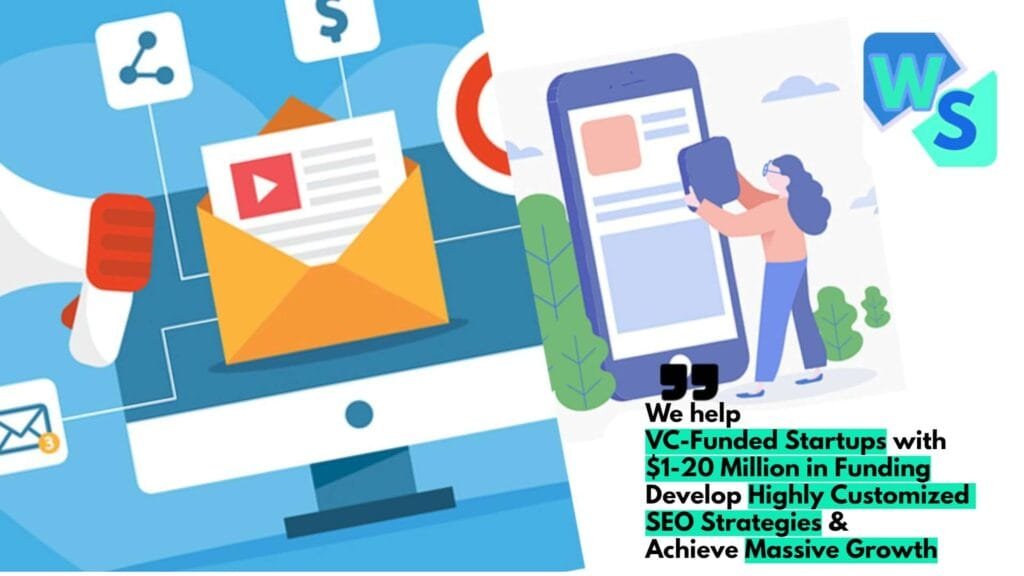Creating a Competitive Edge
In a market where everyone’s fighting for a slice of the pie, standing out is the name of the game if you’re aiming for the long haul. Two big players in this arena are knowing your value pitch inside and out and figuring out what makes you the special snowflake in your neck of the woods.
Grasping the Value Pitch
What makes you different? That’s not just some existential question—it’s what your value pitch is all about. It’s like your business’s equivalent of a superhero calling card. It’s the good stuff you bring to the table that your audience wants and your competition can’t just copy-paste. As explained by the Corporate Finance Institute, a strong pitch should broadcast how you give folks their money’s worth.
Nailing a solid Customer Value Proposition (CVP) involves answering:
- What special perks do you bring?
- How do you make your customers’ lives easier?
- What’s your ace up the sleeve that makes folks choose you over the other guys?
Continuously polishing your pitch is key to staying in the game and making sure you don’t fade into the background noise.
| Must-Have for a Value Pitch | What’s the Scoop |
|---|---|
| Special Perks | What makes your stuff extra? |
| Problem Solving | How you sort out specific headaches for customers |
| Competitive Ace | Why you’re the better pick |
The Power of Standing Out
Being the only one like you in the block is a big deal. It helps businesses not just survive but thrive, like turning up the volume in a quiet song to keep customers listening. It’s all about getting a bead on what folks want and offering it in a way that makes them nod and say, “That’s the one.”
The brains over at Trendata reckon it’s about keeping your ear to the ground and being ready to roll with the punches when the market or customer whims shift.
You can strut your stuff through:
- Snazzy Products: Roll out new gizmos or make what you’ve got so much better that jaws drop.
- Customer TLC: Show ‘em the kind of treatment that leaves a lasting glow and keeps them coming back for more.
- Brand Mojo: Carve out an identity that fans flock to because it just clicks with them.
Zeroing in on these will help you stick out like a sore thumb—in the best way possible. For a deeper dive into how to make your mark, check out our write-up on competitive advantage strategies.
Strategies for Competitive Advantage
In the cut-throat world of business, a few sharp strategies help companies stay ahead of the pack. Let’s jump into how cost leadership, differentiation, and focus strategies can give businesses that winning edge.
Cost Leadership Strategy
Ever wonder why some products are cheaper and still profitable? That’s cost leadership right there. It’s all about being the cheapest guy on the block without sacrificing quality. Companies win big by cutting production and overhead costs, which means they can sell more stuff at lower prices. This strategy attracts folks who always go for the best deal, which boosts sales and keeps those profit margins healthy.
| What It Looks Like | Why It Works |
|---|---|
| Cheaper than others | Grabs more of the market pie |
| Basic, reliable products | More items fly off the shelves |
| Smooth and slick operations | Fatter profit margins |
Craving more insights? Swing by our article on cost leadership in competitive advantage.
Differentiation Strategy
Standing out’s the name of the game here. Companies make sure they’re offering something you can’t find anywhere else. They’re always tinkering away in the lab, coming up with new and improved bells and whistles for their wares. And these unique offerings often mean they can charge a bit more, with customers happy to splash out for what’s special.
| Hallmarks | Payoffs |
|---|---|
| Cool, unique stuff | Customers keep coming back |
| Smart ads and solid branding | You can charge a bit more |
| High-quality, cutting-edge | Customers aren’t always chasing bargains |
For more on this, dive into our piece on differentiation strategy in competitive advantage.
Focus Strategy
Got a knack for spotting an underserved market? That’s where the focus strategy comes in, the art of knowing your audience and crafting just what they crave. By homing in on a specific slice of the market, businesses can offer products or services that seem tailor-made for that group, often avoiding the scuffle with bigger competitors.
| Features | Rewards |
|---|---|
| Pinpoint market targeting | Special products that stand out |
| Bespoke marketing game | Less crowded competition space |
| Happy, loyal customers | Satisfied customers who keep coming back |
Want the full picture? Check out our article on focus strategy in competitive advantage.
So there you have it: cutting costs, standing out, and zooming in on the perfect audience. These strategies are the secret sauce to snagging a bigger chunk of the market, revving up profits, and staying nimble enough to keep up with ever-changing customer desires.
Customer Service as a Differentiator
Importance of Customer Service
Customer service isn’t just the cherry on top of your business—it’s more like the whole sundae! Did you know around 60% of folks would jump ship to another brand when the support doesn’t live up to their standards? (Business.com). So, treating folks right isn’t just a ‘nice-to-have,’ it’s the secret sauce that sets businesses apart these days.
Exceptional service can be your golden ticket. Whether it’s speedy delivery, friendly staff, easy-peasy returns, or even going the extra mile with your distribution buddies for some tag-team marketing, these small things can hassle competitors to keep up (MarketResearch.com). Just think about mega-chains like McDonald’s—they keep people happy with the same dependable service everywhere you go.
Getting close and comfy with customers through stellar service isn’t just about politeness. It’s how brands become the comfy blanket folks reach for. It’s about being the most reliable buddy they can count on, crafting trust, and spreading those feel-good vibes (MarketResearch.com).
Leveraging Personalized Marketing
Personalized marketing ain’t just a buzzword; it’s like giving your customer a warm hug. When businesses speak directly to their shoppers, it’s like saying, “Hey, we get you!” And that, my friends, is how you keep customers sticking around (Business.com).
Tweakin’ things a bit, offering unique twists, or announcing that killer sale right when they need it? They’re not just tactics; they’re how you stand out in a crowd like a neon sign in the fog (Business.com). Deloitte says that the companies rolling in profits are throwing cash at personalization because it works wonders for happy shoppers.
Let’s break this down serious business style, with a table showing just how a sprinkle of personalization can work its magic on customers:
| Area of Personalization | Impact On Customer Experience |
|---|---|
| Customized Offers | Makes you go, “Hey, this is perfect for me!” |
| Targeted Communications | Gives that ‘they actually listen to me!’ feeling |
| Unique Shopping Experiences | Turns one-time buyers into regulars |
| Tailored Support Services | Leaves customers smiling wide |
When businesses weave together a tapestry of personal touches and top-notch customer service, they’re not just building a loyal fanbase. They’re staking their claim in the market. So, while your competitors are still figuring out their maps, you’re already ahead, building your very own competitive edge.
Pricing and Customization
Think beyond the price tag! Crafting the right price and personalizing experiences can totally set businesses apart. Not only do these elements reshape how consumers view a brand, but they can also pump up profits and solidify a brand’s spot in the market.
Strategic Pricing Models
Choosing your pricing path wisely is like giving your business a VIP pass in the competition game. It’s not just about undercutting prices. Here’s the lowdown on some slick pricing strategies that talk directly to the customers:
| Pricing Strategy | What It Means |
|---|---|
| Cost-Plus Pricing | Price = Production Cost + Some Extra for Profit. |
| Value-Based Pricing | Price is based on what people think it’s worth, not how much it costs. |
| Dynamic Pricing | Prices flip with market waves, trends, or how the competition’s doing. |
The folks over at Business.com suggest swinging focus from dirt-cheap prices to real value. This lets businesses cozy up to loyal customers and rake in better profits. By spotlighting product quality and what makes them stand out, companies get to hold their ground more securely.
Customer Experience Customization
People love things that feel like they’re designed just for them. Companies that let customers twist and tweak their buying journey are tapping into our appetite for the personal touch. Deloitte shares that businesses raking in the big bucks are those putting cash and creativity into carving out personalized experiences (Business.com).
Here’s what you gain from making things personal:
- Big Smiles All Around: Tailored experiences make folks happy and keep them coming back.
- More Cha-Ching: Custom offers often mean more sales and bigger buys.
- True Blue Customers: Brands that ‘get’ their customers can expect them to return for more.
Shaping experiences, especially those that are customizable, helps align what businesses offer with what customers crave. This not only sets a brand apart but also shores up their stance in the crowd. If you want more wisdom on how pricing and personalization kickstart success, check out our piece on competitive advantage strategies. Dive into the art of pricing and personalization for a winning business formula!
Innovating for Success
Innovation isn’t just a fancy buzzword; it’s a make-or-break piece of the puzzle for businesses. Big names like Apple and Google didn’t just happen upon greatness; they made innovation part of their DNA (Forbes). By grabbing innovation by the horns, companies don’t just keep up with the competition—they lead the pack and bring something fresh to the table for their customers.
Embracing Innovation
Diving into innovation lets businesses stand out in crowded marketplaces. Companies that put innovation front and center can whip up products and services that hit the mark for what customers actually want. This not only keeps customers coming back, but it also creates a workplace culture that’s quick on its feet when markets change. A business should be a playground for creative thinking, where trying new things isn’t just tolerated—it’s the norm.
Innovation isn’t just about cool new products. Adopting innovative methods can also mean getting processes to work better, slashing costs, and making the customer experience a breeze. Altogether, these perks help carve out a long-term edge over the competition.
Types of Innovation
Getting a handle on different kinds of innovation can give businesses a leg up on the game. Let’s break it down with four standout types:
| Type of Innovation | Description |
|---|---|
| Incremental | Tiny steps to make what’s already there better. These changes make products slicker and easier for everyone to use. |
| Architectural | Shaking up the layout or setup of a product. This might involve changing things around to boost how well it works or how folks use it. |
| Radical | Big-deal discoveries that roll out brand-new stuff. These are the game-changers that can flip how industries operate. |
| Disruptive | These change the game and turn markets on their head. Often cheaper and packed with new tech, these innovations challenge big players. |
Every type of innovation can turbocharge a company’s success. Little improvements keep folks interested, while revolutionary and disruptive ideas can grab untapped markets and shake up entire industries (Forbes).
By weaving these innovation styles into their game plan, companies can shore up their market stance and keep that competitive edge sharp. Craving more on how to boost your advantage in the market? Check out our low-down on competitive advantage strategies.
Leveraging Strengths
To outshine competitors, businesses gotta make good use of what they’re already great at. Two great ways to figure out and use those strengths are SWOT analysis and taking into account what your employees have to say.
SWOT Analysis
SWOT analysis is like a map for businesses. It pinpoints what you’re good at, what needs fixing, where you can grow, and what might trip you up. With these insights, companies can whip up smart plans to boost their game.
| SWOT Element | What’s It About? |
|---|---|
| Strengths | Stuff inside the company that helps meet goals. Like having a recognizable brand, talented staff, and slick operations. |
| Weaknesses | Stuff that drags you down. Could be crappy customer service, not enough cash, or old-school tech. |
| Opportunities | Outside chances to jump on. Think new markets, trends catching on, or tech that’s sweeping in. |
| Threats | Outside forces that could mess things up. Other players getting tougher, money issues, or new rules to follow. |
SWOT analysis is the go-to for decision-makers to shine light on strong suits they can use to stay ahead. Knowing the biz environment is a must for making strategies that deliver. Got more questions on how SWOT can give you a leg up? Don’t miss out on our article about competitive advantage swot analysis.
Employee Feedback
Listening to your employees through surveys, chats, or other ways opens doors to improvements and highlights the gems of your operation. Their insights can uncover important stuff like how folks communicate, leadership style, teamwork, customer service, and how engaged everyone is (Delap LLP).
Looking into common themes or repeated issues from customer moans is key for spotting weak points. This keeps you one step ahead of hiccups and amps up customer happiness, driving success over the long haul (Delap LLP).
Tapping into employee feedback allows businesses to foster a vibe of never-ending betterment. Tackling internal strengths and slips lets them fine-tune processes, boost customer interaction and beef up their stance in the market. Want to know more about how customer service can set you apart? Dive into our section on competitive advantage customer service.
Building Differentiation
In the hustle and bustle of today’s market, standing out is not just a nice-to-have but a must. To edge out competitors, businesses gotta spotlight what makes them unique, both in what they offer and how they treat their customers and partners.
Product and Service Differentiation
Giving your products and services a twist can make a brand’s presence not only seen but felt. The successful ones? They master everything from speedy delivery to top-tier customer service, from thorough training to smooth installation, and even down to how easy it is to buy from them. Take McDonald’s, for example. They’re on top of their service game, consistently dishing out quality whether you’re in New York or Tokyo, making them a global sensation (MarketResearch.com).
| What Sets You Apart | Why It Matters |
|---|---|
| Delivery | Fast, reliable—it gets people coming back for more. |
| Customer Service | It’s all about that friendly, helpful interaction. |
| Training | Guidance that gets customers up and running. |
| Installation | A setup so easy, even your grandma could do it. |
| Ease of Ordering | Buying should be a piece of cake. |
Products that stand out often boast special features or top-notch quality. This makes a mark that competitors find hard to copy. Winning over the crowd often relies on a stellar image, which is built through dependable service and unwavering quality (MarketResearch.com).
Relationship Building
Nurturing strong relationships isn’t just an add-on—it’s key in carving out a competitive niche. Those on the front lines—your employees—are gold. Through their expertise and politeness, they forge emotional bonds with customers, boosting loyalty in a big way (MarketResearch.com).
But it doesn’t stop with customers. Forming rock-solid partnerships with distributors can make good things happen like joint promos and bundled offerings. Such teamwork is what competitors can’t usually mimic, giving companies a steady leg up (MarketResearch.com).
And if you add a personal touch to your marketing? That’s when the magic happens. By sparking an emotional connection, customers stick around longer, and your business gets that standout edge (Business.com). Building trustworthy relationships and offering one-of-a-kind products ensures you won’t just blend into the background. This focused relationship-building and distinctive essence is the heartbeat of gaining that edge.
Developing a Value Proposition
Figuring out what makes your business tick in a crowded market isn’t just a good idea – it’s the whole game. Let’s break down what the Customer Value Proposition (CVP) and Unique Selling Points (USPs) can do for you in standing out from the pack.
Customer Value Proposition (CVP)
Imagine the CVP as your brand’s elevator pitch. It’s that snappy statement that tells folks exactly why they oughta pull out their wallets for your goods or services. Instead of getting lost in the hustle, it gives your customers a reason to choose you. According to the Queensland Government Business and Industry Portal, a clear CVP spells out all the whys and whats of your product in a way that clicks with consumers.
Below is a simple table to give you an idea of what might go into crafting a CVP:
| Element | What it’s about |
|---|---|
| Customer Needs | What your customers are itching for |
| Offered Solution | How you step up to meet those needs |
| Unique Features | The special sauce in your product that others can’t touch |
| Key Benefits | The good stuff your customers get out of using what you offer |
Creating a CVP means putting on your detective hat: uncovering what your customers really want and carefully putting that into words that speak to them. Often, this means getting down and dirty with market research and poring over customer feedback to ensure you’re hitting the right notes.
Unique Selling Points (USPs)
Now, let’s talk USPs. Think of these as the standout features that tell your audience why your brand is the best show in town. Your USP isn’t just something you slap on a commercial; it’s what makes you unmistakably different and keeps customers coming back for more. Get it right, and you’re not just selling — you’re stealing hearts. Here’s what the Queensland Government Business and Industry Portal says: clear USPs mean your brand’s story gets told the way it should.
Check out this table for hypothetical USPs from three brands battling it out in the same field:
| Brand | Unique Selling Point |
|---|---|
| Brand A | All about eco-friendly stuff that Mother Nature gives a nod to |
| Brand B | Top-tier warranty and customer care through thick and thin |
| Brand C | Cutting-edge tech that makes your gear work like a charm |
Coming up with killer USPs means you gotta know your rivals better than they know themselves and keep a finger on the market’s pulse. Dive into what makes your offerings a real head-turner while keeping up with what your customers crave. Need some tips on snagging that advantage? Check out our guides on competitive advantage strategies and examples of sustainable competitive advantage.
By nailing down a meaningful CVP and pairing it with rock-solid USPs, businesses can position themselves not just as participants but as champs of their respective market fields, setting them up for a competitive advantage in business.
Sustaining Competitive Advantage
Keeping ahead of the game is no walk in the park. It takes hustle and a knack for rolling with the punches. Two big-ticket strategies to stay on top are market segmentation and nonstop innovation.
Market Segmentation
Market segmentation is like throwing a party and knowing exactly who to invite based on their likes, dislikes, and quirks. By sorting out the market into neat little groups based on things like age, where folks live, or what gets them out of bed in the morning, businesses can whip up products and services that hit the spot for each group. This personalized touch not only keeps customers happy but also makes a business do a little victory dance over its competition. The word on the street is that market segmentation plays a starring role in keeping that competitive mojo intact.
| Segment Type | Description | Example Product |
|---|---|---|
| Demographic | Age, gender, income-based | Clothes for teenagers |
| Geographic | Location-based | Local snacks |
| Psychographic | Interests and values | Green goodies |
| Behavioral | Usage habits | Subscription boxes |
Nailing market segmentation means more high-fives with satisfied buyers and fans who don’t jump ship. Can’t get enough of this stuff? Check out our piece on competitive advantage in marketing.
Continuous Innovation and Adaptability
Staying fresh is the name of the game if you want to keep that competitive edge sharp. It’s not just about sprucing up the old offerings but also being open to game-changers. The businesses that roll with new market vibes, switch up tech, and tune into what folks want next tend to come out swinging.
Here’s how to keep the innovation ball rolling:
- Product Development: Keep the products fresh, tweak ’em, or bring new goodies to suit what folks are craving.
- Process Improvement: Trim the fat on operations so everything runs like a well-oiled machine.
- Service Enhancement: Give customer service a shiny makeover for those feel-good experiences.
The secret sauce is a workplace buzzing with creative ideas and a “yes, we can” attitude. Throw some cash into R&D, keep the feedback loop open wide, and have your ear to the ground on market trends to stay limber and ahead. You can dive deep into all things innovation in our article on competitive advantage innovation.
By slicing and dicing the market and pumping up the innovation vibes, businesses can stay in the game and ride the market waves like pros.




















